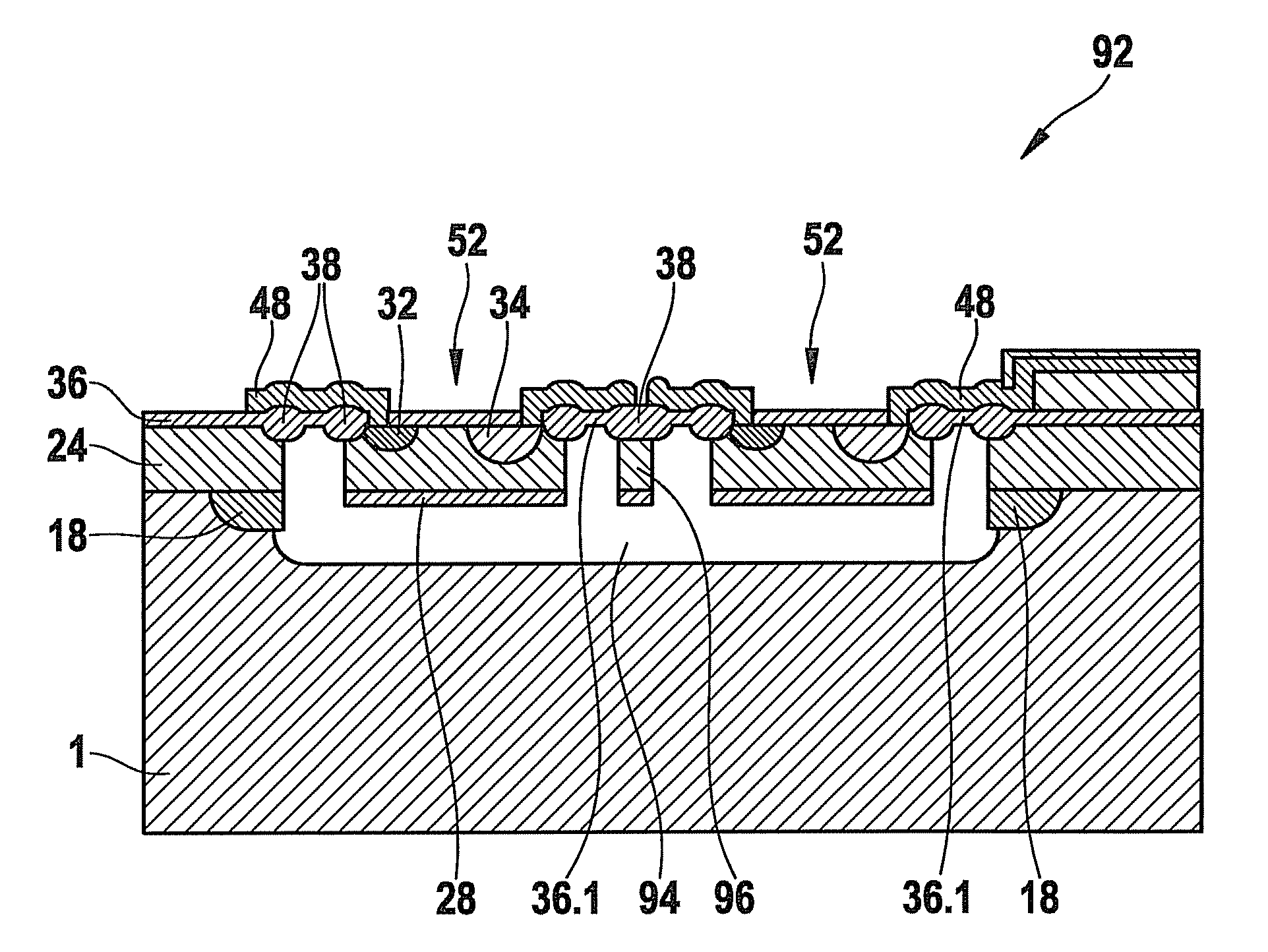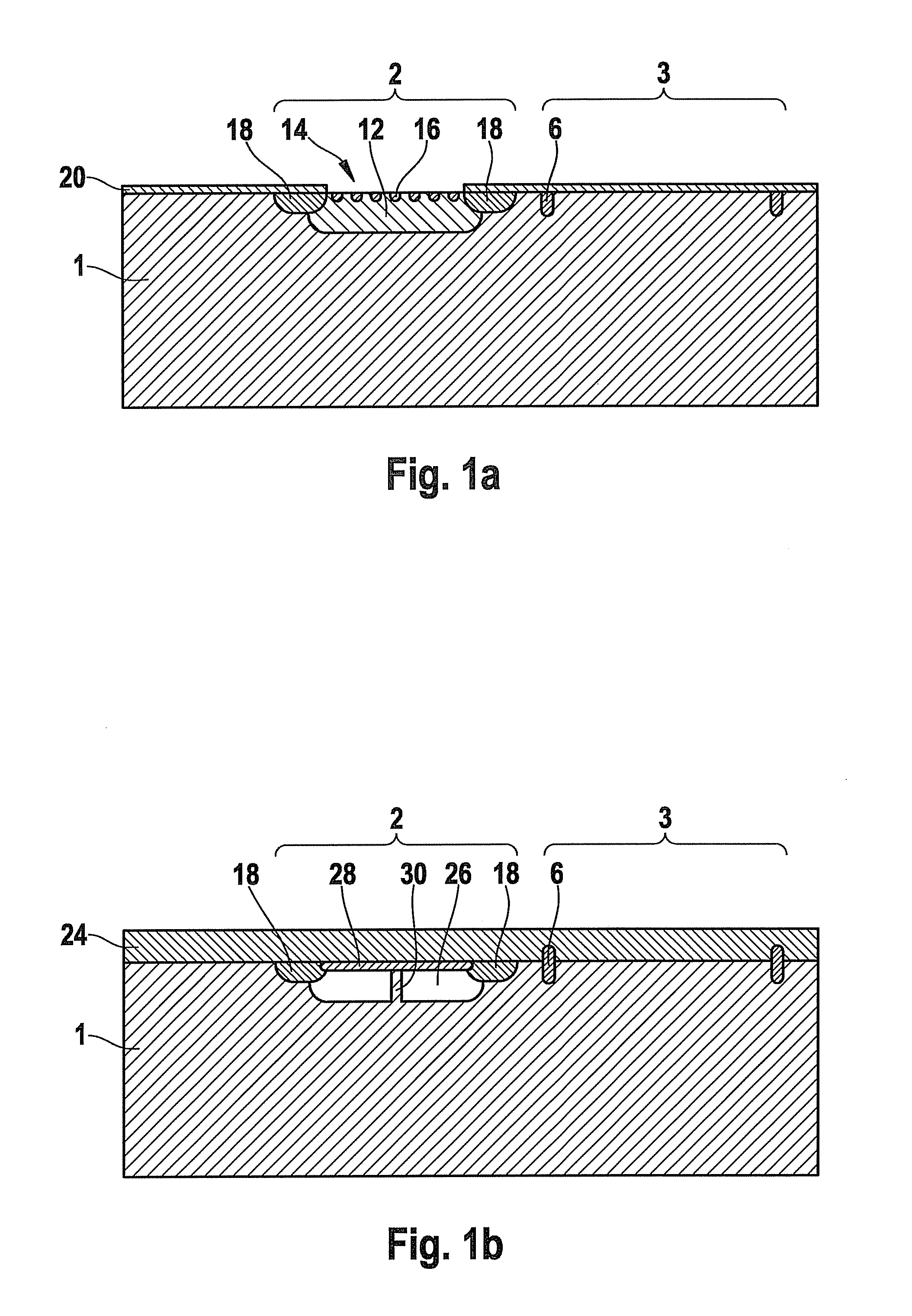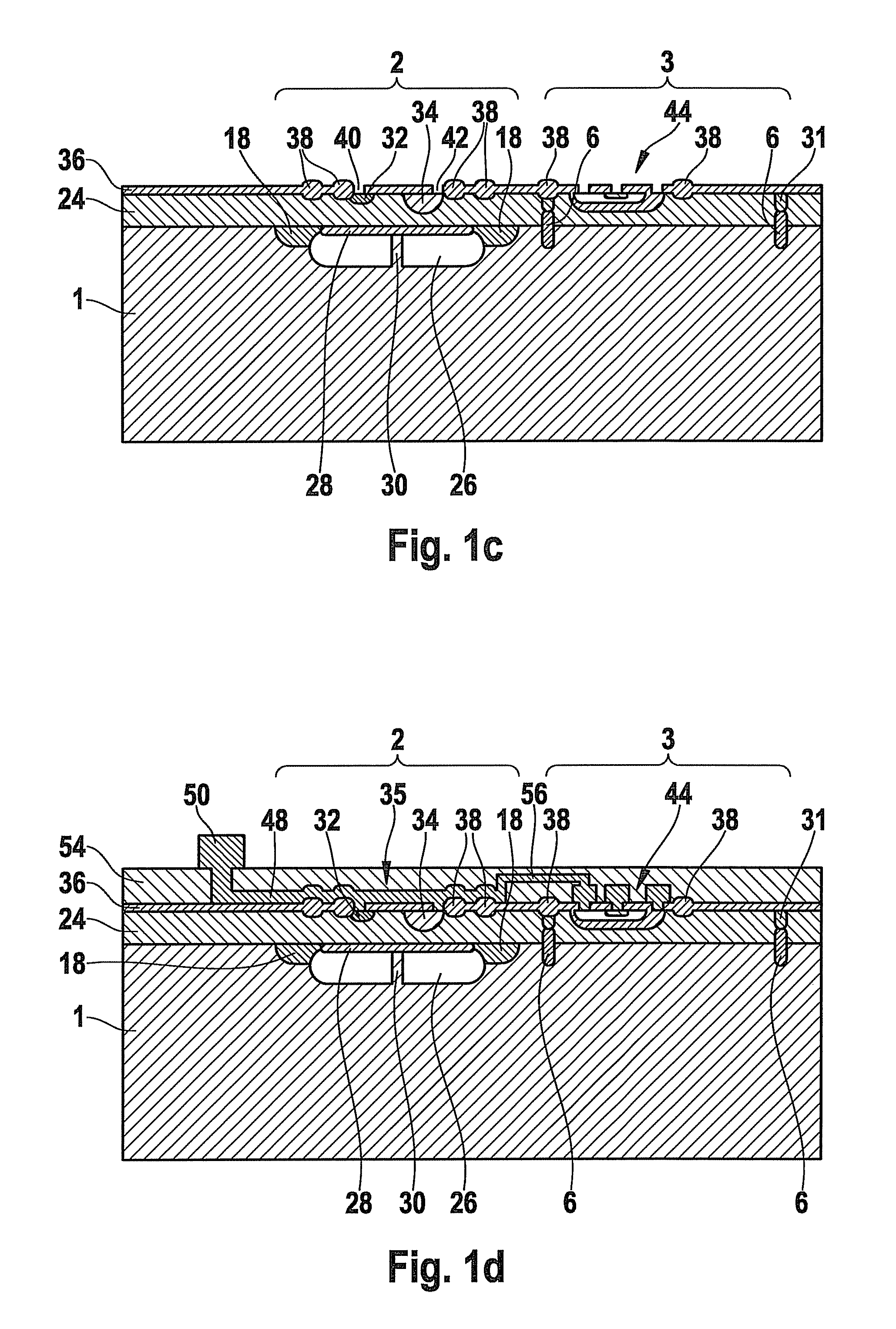Sensor and method for its production
a technology of sensors and production methods, applied in the field of sensors, can solve the problems of not allowing the development of more complex sensors with high resolution and low nois
- Summary
- Abstract
- Description
- Claims
- Application Information
AI Technical Summary
Benefits of technology
Problems solved by technology
Method used
Image
Examples
Embodiment Construction
[0029]In the production process, a detector region 2 and, laterally spaced apart or abutting, a circuit region 3 are formed on a p-semiconductor substrate 1, e.g., p-doped (100) silicon; the development of the two regions 2, 3 is able to be fully or partially combined in the subsequent process steps.
[0030]According to FIGS. 1a through 1f, both the circuit region 3 and detector region 2 are implemented in surface-micromechanical manner from the top surface of p-substrate 1. To this end, preliminary circuit processes to form circuit region 3 may be implemented to begin with. Process steps for forming circuit region 3 may also be added between the subsequent process steps 1a through 1f. In an advantageous manner, one or several of the following process steps for developing detector region 3 is / are simultaneously utilized to produce circuit region 3.
[0031]Using p+ doping, for example, a lower iso-layer 6, which has the shape of a trough in cross section, may be formed in p-substrate 1 b...
PUM
 Login to View More
Login to View More Abstract
Description
Claims
Application Information
 Login to View More
Login to View More - R&D
- Intellectual Property
- Life Sciences
- Materials
- Tech Scout
- Unparalleled Data Quality
- Higher Quality Content
- 60% Fewer Hallucinations
Browse by: Latest US Patents, China's latest patents, Technical Efficacy Thesaurus, Application Domain, Technology Topic, Popular Technical Reports.
© 2025 PatSnap. All rights reserved.Legal|Privacy policy|Modern Slavery Act Transparency Statement|Sitemap|About US| Contact US: help@patsnap.com



